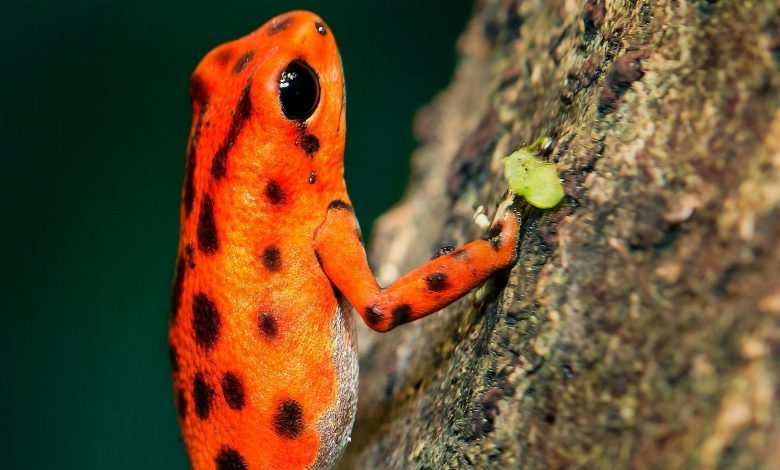Endangered frogs found only in the Andaman Islands defy gravity, mate upside-down: Study | Trending

A recent study an Indo-American team of biologs discovered a unique breeding behaviour in Charles Darwin’s frog (Minervarya Charles Darwin) found in the Andaman Islands. The study, published in the Harvard Museum of Comparative Zoology’s journal Breviora, revealed that the frogs mate upside-down. The paper also sheds light on unnatural breeding sites and calls for conservation. The study also revealed that the species that mate vertically use intricate calls to attract females. (Representative image) The research, led Professor SD Biju of the University of Delhi, reveals that instead of underwater mating, these frogs climb the walls of water-filled tree cavities or root buttresses and deposit terrestrial eggs. Unlike other frogs, this species deposits its eggs vertically, upside-down, on the inner walls of water-filled tree cavities or root buttresses. Once laid, the eggs eventually fall into the water below, developing into tadpoles. “During axillary amplexus, mating pairs synchronously switch between head-up and head-down positions above and below the water surface using both forward and backward movements,” the paper noted. It added, “At the time of egg laying, amplectant pairs are in an upside-down position on the cavity walls with their bodies completely outside the water.” “This is a remarkable frog and its reproductive behaviour is unique for a number of reasons. No other frog lays terrestrial eggs in an upside-down position within tree holes,” The Hindu quoted Professor SD Biju who led the study, and is currently a fellow at the Harvard Radcliffe Institute and an Associate of the Harvard’s Museum of Comparative Zoology as saying. He added, “Such specialised traits also yield insights into the evolution of reproductive modes and behaviours among anuran amphibians. This discovery is crucial for understanding the species’ interaction with its environment and its essential habitats.” The study also revealed that the male Charles Darwin’s frogs use intricate calls to attract females. These calls include three dinct types: advertisement, aggressive, and combat. When vocalizations prove ineffective, these frogs engage in intense physical battles, kicking, boxing, and biting rivals in their quest for dominance. The mating process is fraught with challenges. When a male successfully mounts a female, other males often interfere with the pair, leading to aggressive skirmishes. The upside-down position of the mating pair might be a clever strategy to deter rivals and protect their offspring. The study further revealed that the frogs are increasingly breeding in artificial and discarded containers such as plastic and metal trash. This shift is attributed to habitat loss and competition for natural breeding sites. Sonali Garg, a Biodiversity Postdoctoral Fellow at Harvard’s Museum of Comparative Zoology who co-led the study, said, “The frogs’ use of trash for breeding is both surprising and worrying. We now need to know its causes and long-term consequences and devise ways to protect the natural breeding sites that are critical for the survival of the species.” The International Union for Conservation of Nature (IUCN) classifies Charles Darwin’s frog as ‘Vulnerable’. This study’s fieldwork, which lasted three years, involved more than 55 nights of observation during the monsoon season across the Andaman archipelago.







